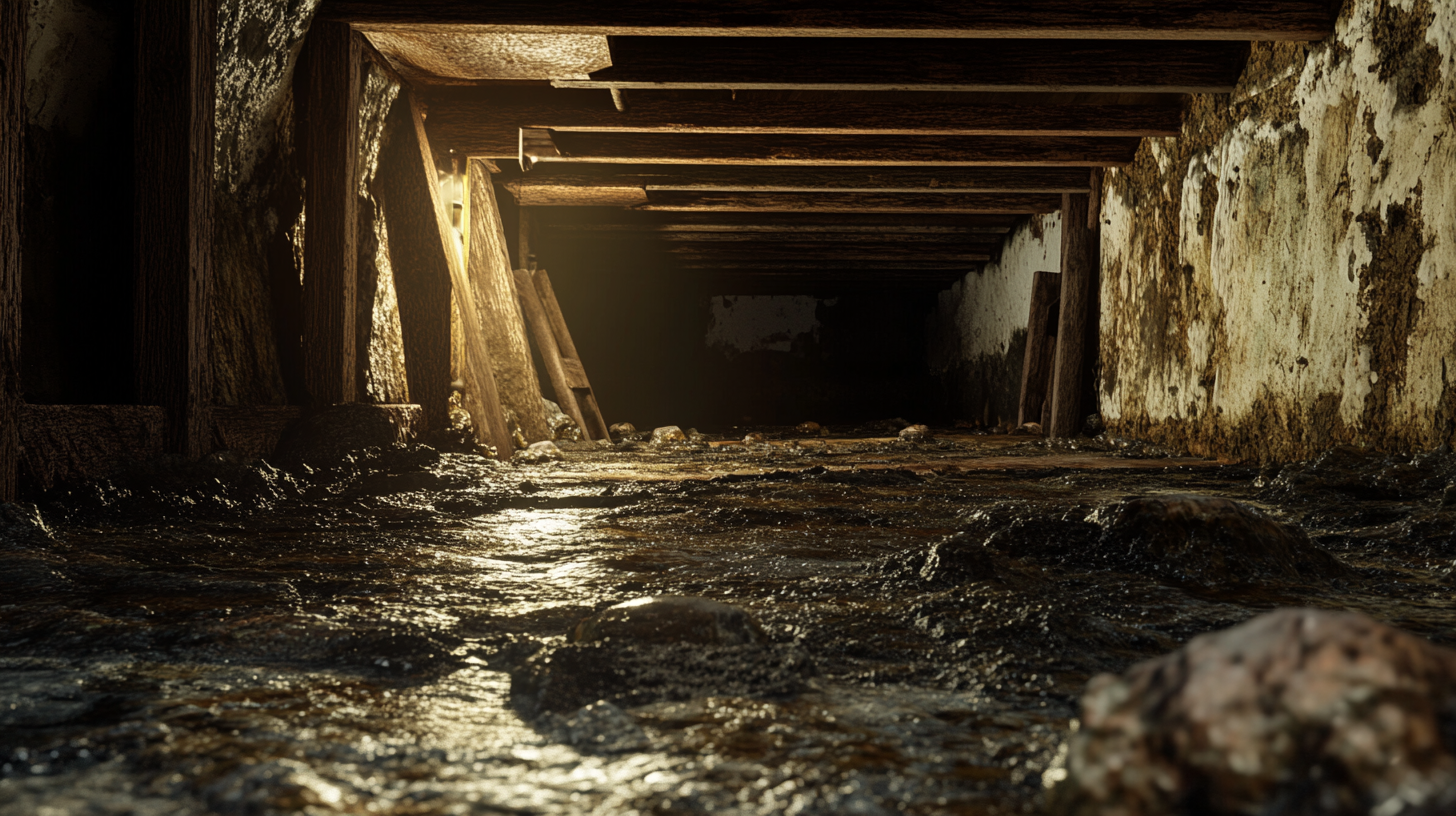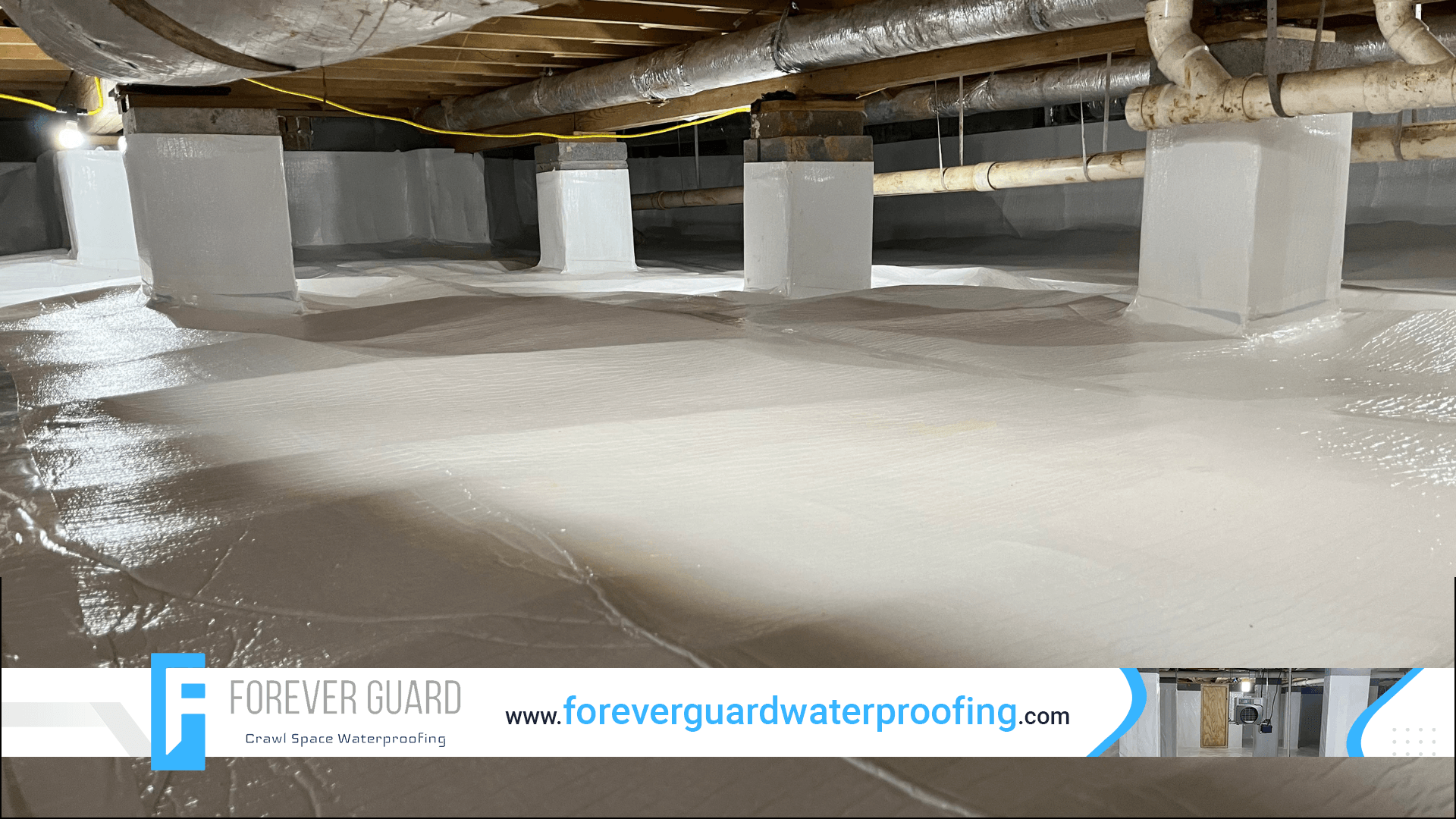Now IS THe Time To...

Crawl Space Services In Knoxville, TN
Stetson Howard: 865-432-6743
CRAWL SPACE ENCAPSULATION, REPAIR, WATERPROOFING & MOLD REMOVAL
No-Obligation, Free Inspections
No-Obligation Free Estimates
We Warranty All of Our Work
100% Satisfaction Guaranteed
If you’ve recently noticed a musty smell in your home or evidence of water damage, your crawl space may be the culprit. Water is one of the most destructive forces on earth and can cause serious damage to both the structure and air quality of your home. To prevent further damage, you must understand why water removal from your crawl space is so important.
Water removal from a crawl space should never be taken lightly. Without proper maintenance, water can collect in your crawl space and cause extensive damage to the structure and living environment of your home. By having regular inspections and water removal services completed, you can protect yourself against these potential damages.
What is a crawl space?
If you own or are considering buying a home, you may have heard of something called a “crawl space.” But what exactly is it? A crawl space is an area underneath your home that provides access to mechanical systems and other components. It can be used for storage, insulation, and ventilation, and can also help protect your home against water damage. In this blog post, we’ll provide an overview of the different types of crawl spaces and their benefits.
Installing a crawl space in your home offers numerous benefits including increased energy efficiency due to better insulation from beneath the house, improved air quality thanks to proper ventilation, protection from water damage resulting from flooding or high amounts of rain/snowfall in your area, reduced noise transmission between floors due to added insulation, and easier access for inspecting/repairing plumbing/electrical components that would otherwise be difficult to reach. Additionally, having a sealed crawl space may save you money over time because there will be fewer heating/cooling costs associated with maintaining the temperature inside the space throughout the year.
Why is it important to keep your crawl space dry?
It is important to keep your crawl space dry for a variety of reasons. Not only will it help prevent wood rot and water damage, but it can also help protect the air quality in your home. In this blog post, we’ll discuss why keeping your crawl space dry is so important and what steps you can take to make sure that it stays dry.
The Dangers of a Wet Crawl Space
A wet crawl space can cause a lot of problems for homeowners. Moisture in the crawl space can lead to wood rot, which means that structures like floor joists and wall studs may begin to deteriorate over time. This can lead to costly repairs down the line, as well as health risks if mold begins to grow due to moisture. Additionally, a wet crawl space can also promote the growth of pests and insects, which could then spread throughout your home.
Maintaining Your Crawl Space
To keep your crawl space dry, you need to maintain it regularly. This includes checking for leaks or cracks in the foundation walls and floors and making sure that all vents are properly sealed off from outside air. You should also check for any signs of standing water or puddles in the area and make sure that there is a good drainage system in place around the perimeter of the house. Additionally, you should avoid using mulch around your foundation as this can retain moisture and create an environment where pests are more likely to thrive. Finally, be sure to inspect pipes located in the area for any signs of leaking or corrosion regularly and have them repaired or replaced if necessary.
What are some of the signs that you have a wet crawl space?
A wet crawl space is a serious problem facing many homeowners. Water can easily seep into the area under your home, creating problems with mold, mildew, and structural damage if not handled quickly and professionally. Fortunately, some tell-tale signs can alert you to a potential wet crawl space. Knowing what to look for can help you take action before the damage gets worse.
The most obvious sign of a wet crawl space is standing water or pooling water in the area beneath your house. This could be caused by cracks in the foundation or even plumbing leaks inside your home. If you see any standing water, it’s important to investigate further and determine the source of the moisture.
If there isn’t any visible water but you suspect that your crawl space is wet, there are other clues that you can look for. For instance, if you notice a strong musty smell coming from underneath your house, this could be an indication of mold or mildew growth caused by high moisture levels. Additionally, if you find that wooden beams and floor joists are rotting or softening due to moisture exposure, this could also be an indication of excessive dampness in the area beneath your house.
Finally, if you notice condensation on cold surfaces such as pipes and ductwork in the crawl space, this could mean that there is too much humidity in the air which can lead to mold or mildew growth over time. It’s important to address these issues as soon as possible in order to prevent further damage from occurring.
What are the consequences of having a wet crawl space?
A wet crawl space can be more than just a nuisance; it can create severe problems for your home and the health of your family. If you have been noticing dampness or pooling in your crawl space, now is the time to take action.
The Effects on Your Home Structure
First and foremost, a wet crawl space can create structural issues in your home. Water seeping into the soil can cause it to become unstable and shift, creating an uneven foundation that could lead to cracks in walls and floors and even broken pipes. In addition, because water encourages rot, having wet conditions in your crawl space could lead to rotting wood support beams, which could eventually collapse if left unchecked.
The Effects on Your Health
Having a wet crawl space can also put the health of you and your family at risk. Mold from damp conditions grows quickly in dark places like a crawl space, often without being noticed until its effects have already taken hold. This mold can then spread into other parts of your home via air ducts or ventilation systems, leading to allergies or asthma symptoms such as coughing, sneezing and trouble breathing. In some cases, mold spores can even produce harmful toxins that may cause serious illnesses such as cancer or neurological disorders.
Preventative Measures
Taking preventive measures is essential when it comes to protecting your home from damage caused by water in the crawl space. Installing sump pumps or drainage systems will help keep water away from vulnerable areas of your house. It is also important to check for any water leakage around plumbing fixtures or air conditioning units that could be causing moisture buildup below ground level. Additionally, make sure that gutters are installed correctly so rainwater drains away from the foundation of your house instead of pooling up near its base where it could seep into the soil beneath it.
How do you fix a wet crawl space?
Identifying the Problem
The first step is identifying the source of the moisture in your crawl space. This can be done by inspecting for signs of water damage such as standing water or damp insulation. Additionally, look for any visible signs of water leakage from pipes or vents. If you find any evidence of leaks or seepage in your crawl space, then it's time to start fixing the issue.
Hire a Professional
Hiring an experienced professional is the best way to ensure that your wet crawl space is properly repaired and protected from further damage. Professionals have access to specialized equipment such as sump pumps and waterproofing materials that can help them quickly identify the source of the problem and repair it effectively. Furthermore, they understand how to safely inspect your crawl space for any hidden sources of water such as broken pipes or plumbing leaks that you may not be aware of.
Additionally, some professionals may offer additional services such as mold testing which can help you determine whether or not there is any serious health hazard present due to mold growth in your home. They may also provide advice on proper ventilation techniques so that you can avoid future issues with moisture buildup in your home’s crawl space.
Fixing Leaks and Seepage
If there are leaks or seepage present in your crawl space, then it's important to address these issues as soon as possible. Start by repairing any damaged pipes or vents that may be leaking water into the crawl space. Additionally, make sure that all gutters and downspouts are properly routed away from the foundation of your home so that no additional moisture is entering your crawl space from outside sources.
Sealing and Insulating
Once all potential sources of leakage have been fixed and addressed, it's time to start sealing and insulating the walls of your crawlspace. Begin by cleaning out any debris in the area that may be trapping moisture against the walls. After this is done, use polyethylene sheeting (also known as Visqueen) to seal up any cracks or gaps that may be letting moisture in from outside sources. Finally, line any exposed walls with insulation material like foam board or spray foam insulation which will help keep moisture out while also increasing energy efficiency inside your home.
Conclusion
Regularly checking and maintaining your crawl space is essential for preventing costly damages down the line as well as protecting against potential health hazards due to poor air quality caused by high levels of humidity or moisture buildup in this area of the house. It's important to remember that although there may be initial costs associated with having someone come out to inspect and remove any standing water from this area; doing so now could save you thousands later down the road due to potential structural damages or health risks created by high levels of humidity within this part of home over time! Don't wait until it's too late—invest in professional water removal services today!
Recent Blog Posts
Crawl Space News







